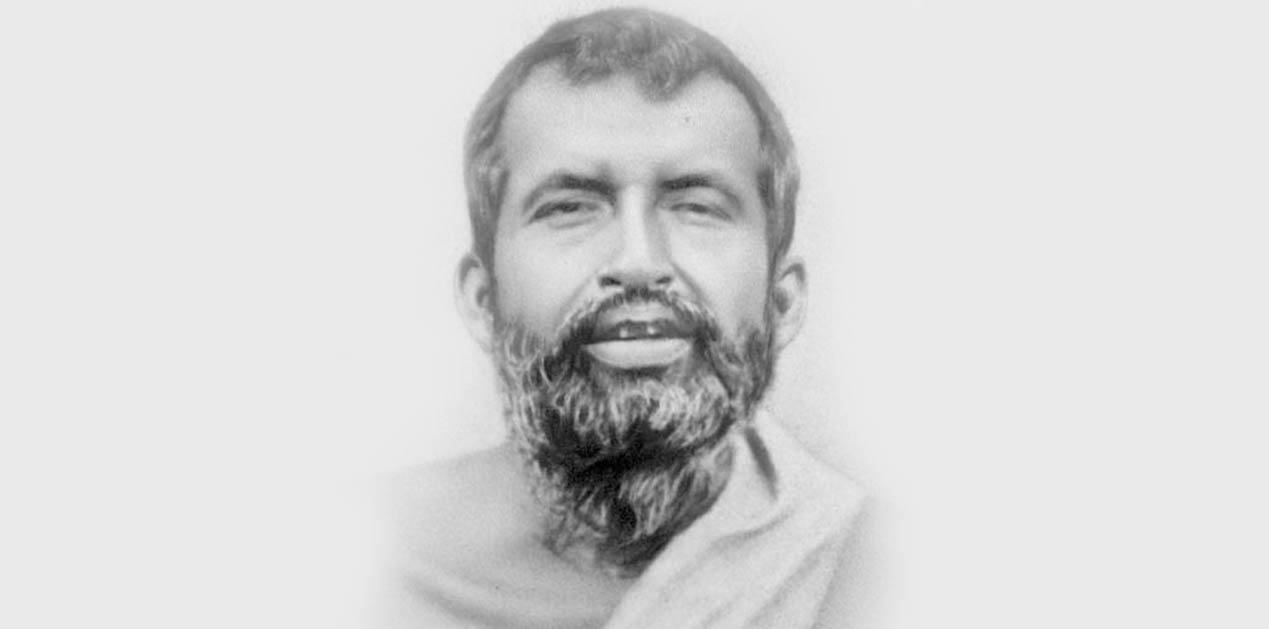Indian scriptures and texts contain a rich fund of ideas that can help us navigate through the practical-moral labyrinth of life. Modern saints continue to illumine our minds with insightful solutions to ethical problems. No exception in this respect was Sri Ramakrishna (1836-1886). While being the embodiment of the effulgent light of divinity, Sri Ramakrishna had very incisive solutions to offer to some of the worldliest problems of the world. As he himself had pointed out—be simple, but not foolish.
Since life is governed by the principle of action and reaction, morality is not just an imperative, but the best strategy as well. Our scriptures (sastra) have demonstrated that the ethical path (dharma) is a very subtle (sukshma) path. As rightly pointed out by A K Ramanujan, the Mahabharata is more about dharmasukshmata (subtleness of ethics) than about dharma (ethics) itself.1 The problem of evil is perhaps the biggest question in moral life. Every act is necessarily a mixture of good and evil. So where is the escape? There exists evil in this world. So, can a person who is striving to be moral escape the injury caused by evil people without himself indulging in some kind of evil? It is only when we can appreciate the complexity of the issue that we will be able to come close to a solution. Let us see what light Sri Ramakrishna had to throw on the problem of evil.
“Do not bite, but hiss!”
This is a relatively well-known teaching from the Kathamrita.2 When asked about how spiritually-minded people could deal with evil people in the world, Sri Ramakrishna recounted a story. Once upon a time, there lived a deadly snake in a meadow near a village. Many cows that went grazing in the meadow fell prey to its venom. Once, a sadhu, passing through the meadow, was warned of its existence. He chose to traverse the meadow nonetheless. As was usual with the snake, as soon as it saw a new passer-by, it raised its hood to attack. The sadhu immediately recited a mantra and lo behold! The snake lay at his feet, conscious, but without any vigor. The sadhu exclaimed to the snake: “Why do you go about doing harm to everybody? Come, I will give you a holy mantra and initiate you.3 By repeating the mantra you will have a vision of God and your violent nature will change.” The snake happily accepted the act of grace. The guru’s parting advice was: “Repeat God’s name, and do not harm anybody. I shall visit you again.”
Days passed, and the cowherd boys noticed that the snake was not biting anyone. They tried to poke it and see its reaction. No reaction came. They got encouraged and started throwing stones. No reaction still. Finally, one day, one of the boys lifted the snake by its tail, whirled it around and thrashed it again and again on the ground. The snake vomited blood and became unconscious. Since his guru had explicitly asked him not to harm anyone, it had eschewed violence completely. Many more days passed. The snake survived, but became completely emaciated.
In the meantime, there was a genuine change in the nature of the snake. It had not only forgiven the boys but had also almost forgotten the incident. It started living on fruits and leaves. As promised, the sadhu visited his disciple again. Seeing it very weak and thin, he enquired into the reason. The sadhu heard the episode of the cowherd boys and learnt that his beloved disciple would not harm anybody because he had forbidden him to do so. On hearing this, the sadhu exclaimed: “But you are such a fool! I had asked you not to bite, but I did not forbid you to hiss! Why did you not hiss and protect yourself against the mischief of the boys?” After recounting this story, Sri Ramakrishna summed up the moral, saying one should always hiss at wicked people, lest they harm you; but one should never harm anyone.
This parable is meant for the majority of us. A saint is above such compulsions. The extent of love and peace that a saintly man exudes might even tame a tiger. But the rest of humanity needs a pragmatic solution to tackle evil, especially for those want to remain in the camp of the ‘good’. Harming others for no good reason is not an option; getting annihilated in our attempt at being good is also not an option. One has to, in certain contexts, demonstrate one’s capacity to harm—which has to be a real capacity—if it becomes a question of one’s own survival.
The Mad Elephant
Another gem of pragmatic insight is the following story which Sri Ramakrishna told his students. One day, in a forest, a holy man was teaching his disciples that they should see Narayana4 in all beings and bow before all in that spirit. After this incident, one of the disciples went into the forest to gather wood. Suddenly he heard a man screaming: “Get out of the way! A mad elephant is coming!” The boy saw the elephant but did not move. “See Narayana in all beings”—this is what was echoing in his mind, and he reasoned that the mad elephant was also a manifestation of God. Hence, instead of running away, he bowed before the elephant. The mahut of the elephant warned again: “Move away! Move away!” The disciple stood still. The elephant, however, did not return the good gesture—it seized him with its trunk and cast him on one side. Hurt and bruised, the young boy went back to his guru’s ashrama. On seeing his condition, the holy man enquired and came to know the entire incident. On hearing the student’s reasoning, he remarked: “But why my boy! You waited for the elephant-narayana to dash you on the ground. Why did you not listen to the mahut-narayana and take to your heels?” True, all are manifestations of God, then what should stop us from listening to the advice of sane people who are as much manifestations of God as are the wicked? On another occasion, Sri Ramakrishna had also explained that all water is Narayana, yet only some water is fit for drinking, some other water is fit for washing hands and face, and with some only pans and pots can be cleaned.
The Expert Singer
Ramakrishna’s parables also shed light on some other tough questions of our moral life. A man was recounting how Duryodhana had the scope of distorting Krishna’s teaching that God alone is the doer and human beings are only the instrument. Duryodhana said that he was not responsible for his actions because all evil acts too have God alone as the doer and human beings are mere instruments. This is, of course, a clever way of disowning one’s immoral actions. However, if human beings are mere instruments, how do we really rationalize evil in this world? Ramakrishna’s answer was twofold: firstly, even when God is the doer, human beings have to bear the fruit of their actions—sow evil, reap evil, period. Secondly, and more importantly, one who has attained perfection (realized God) cannot commit sin—“an expert singer cannot hit a false note!” A distinction between good and evil is hardwired in the psyche of a perfected person. In other words, attain perfection, you would automatically know the distinction between right and wrong!
These insights from the teachings of Sri Ramakrishna are veritable life strategies. They show us that spirituality and foolishness are not synonymous, and that, at the same time, it is possible to live in this mad world without eschewing morality. Eternal principles should inform our ways of being and doing in this world. Spirituality makes one wise and courageous, not foolish and weak. On the other hand, a strategy that is bereft of morality is not only immoral but a bad strategy as well.
References
- A K Ramanujan, ‘Where Mirrors are Windows: Toward an Anthology of Reflections’, History of Religions, 28(3), 1989, p. 205.
- Sri Sri Ramakrishna Kathamrita is the principal compendium of Sri Ramakrishna’s teachings recorded by his householder disciple, Sri M, whose full name was Mahendranath Gupta. M was himself present during these conversations which he copied verbatim in his notebooks later. The Kathamrita is by no means the only source of the teachings of Ramakrishna, whose words and advice have also been authoritatively recorded by his monastic disciples in their reminiscences. The Kathamrita was translated into English by Swami Nikhilananda as The Gospel of Sri Ramakrishna, 2 vols., Chennai: Sri Ramakrishna Math.
- Spiritual initiation takes place when a competent holy person gives an ishta mantra/beej mantra to a fit spiritual aspirant. By repetition of that mantra, which is potent, the aspirant can achieve God realization. The giver of the mantra becomes the guru and the recipient is the disciple.
- Another name for Lord Vishnu. Seeing Narayana in everyone means accepting the immanence of God, that is, the fact that God exists in all.
(The paper is the author’s individual scholastic articulation. The author certifies that the article/paper is original in content, unpublished and it has not been submitted for publication/web upload elsewhere, and that the facts and figures quoted are duly referenced, as needed, and are believed to be correct). (The paper does not necessarily represent the organisational stance... More >>
Image Source: https://upload.wikimedia.org/wikipedia/commons/0/04/Ramakrishna_image_cropped.jpg











Post new comment